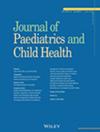School Attendance Among Autistic Students in Aotearoa/New Zealand: A Population Cross-Sectional Study Using the Integrated Data Infrastructure
Abstract
Background
Extant literature indicates autistic students have lower school attendance compared to the general population. However, there remains considerable heterogeneity between studies, a lack of large population-based studies beyond the UK and US, and insufficient consideration of age and sex differences in attendance rates. The aim of this study was to examine school attendance among autistic compared with non-autistic students including stratification by age and sex.
Methods
This was a national retrospective cohort study using population-level data on students aged 5 to 16 years in 2018. Autism was identified using diagnostic information contained within multiple health datasets. Regular attendance was defined as attending 90% or more of school half days. The association between autism and attendance was estimated using complete-case 2-level random intercept modified Poisson regression.
Results
Among 654 438 students, 8427 (1.3%) were autistic. In adjusted analyses, autism was associated with significantly decreased likelihood of regular attendance (incident rate ratio [IRR] 0.88; 95% CI, 0.86–0.90). Age and sex stratification revealed significant age differences with likelihood of regular school attendance lower for younger autistic students (5–11 years) (IRR 0.85; 95% CI, 0.83–0.87) while sex differences were marginal. The most frequent type of non-attendance among autistic students was justified (including medical) absence (8.2% of recorded attendance hours for autistic students vs. 5.0% for non-autistic students).
Conclusion
This study provides further, whole-population evidence of the significant disparities experienced by Autistic students. To improve attendance of autistic students, comprehensive and targeted supports are required to help the student, family and school.


 求助内容:
求助内容: 应助结果提醒方式:
应助结果提醒方式:


